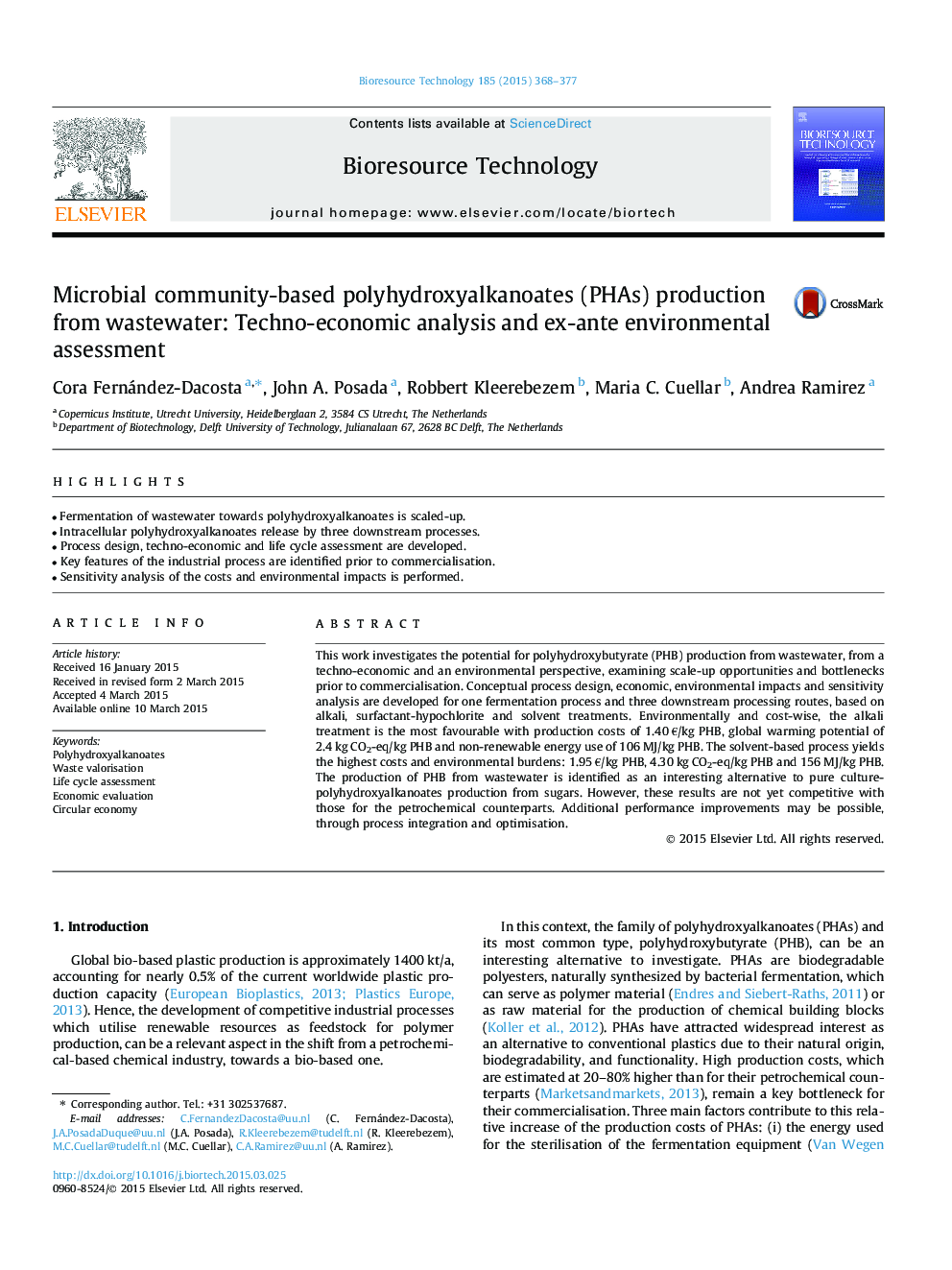| Article ID | Journal | Published Year | Pages | File Type |
|---|---|---|---|---|
| 679838 | Bioresource Technology | 2015 | 10 Pages |
•Fermentation of wastewater towards polyhydroxyalkanoates is scaled-up.•Intracellular polyhydroxyalkanoates release by three downstream processes.•Process design, techno-economic and life cycle assessment are developed.•Key features of the industrial process are identified prior to commercialisation.•Sensitivity analysis of the costs and environmental impacts is performed.
This work investigates the potential for polyhydroxybutyrate (PHB) production from wastewater, from a techno-economic and an environmental perspective, examining scale-up opportunities and bottlenecks prior to commercialisation. Conceptual process design, economic, environmental impacts and sensitivity analysis are developed for one fermentation process and three downstream processing routes, based on alkali, surfactant-hypochlorite and solvent treatments. Environmentally and cost-wise, the alkali treatment is the most favourable with production costs of 1.40 €/kg PHB, global warming potential of 2.4 kg CO2-eq/kg PHB and non-renewable energy use of 106 MJ/kg PHB. The solvent-based process yields the highest costs and environmental burdens: 1.95 €/kg PHB, 4.30 kg CO2-eq/kg PHB and 156 MJ/kg PHB. The production of PHB from wastewater is identified as an interesting alternative to pure culture-polyhydroxyalkanoates production from sugars. However, these results are not yet competitive with those for the petrochemical counterparts. Additional performance improvements may be possible, through process integration and optimisation.
